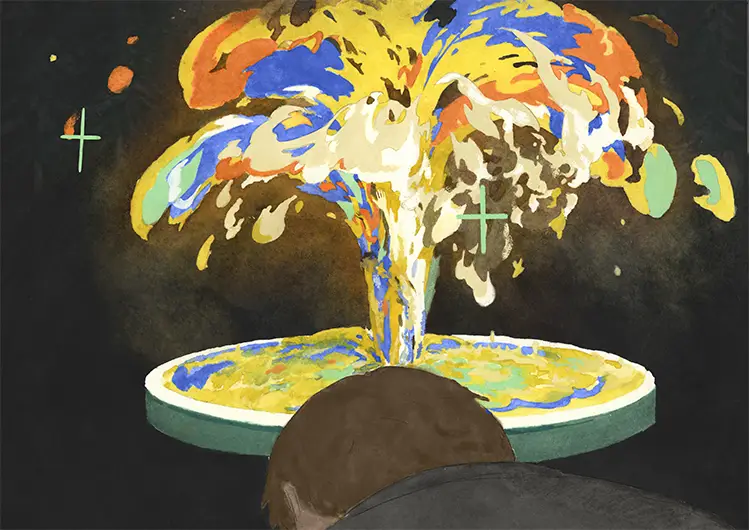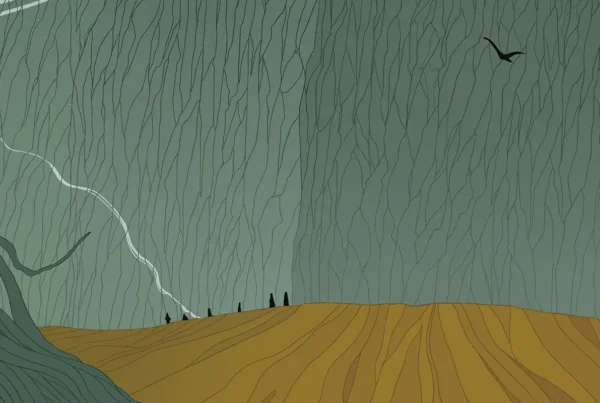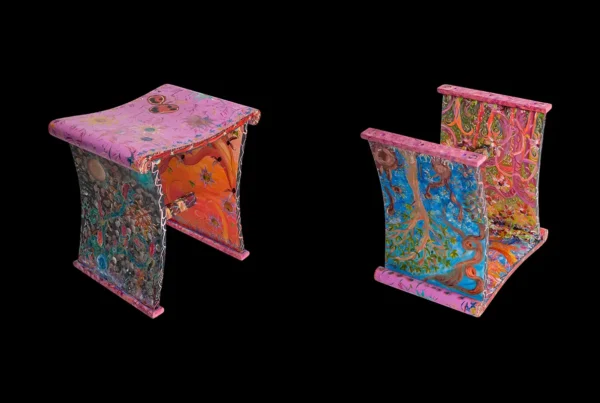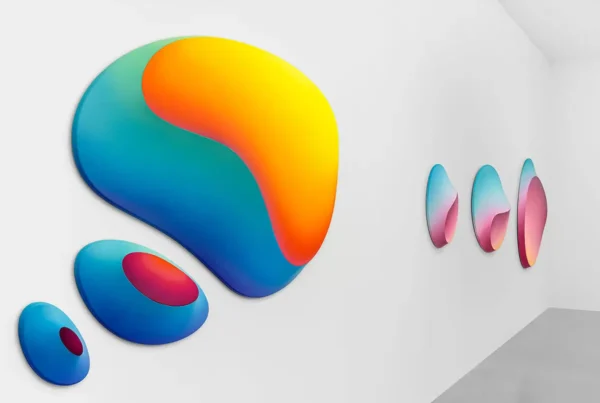“My work often explores themes of emotion, mental health, the subconscious, dreams, and social issues.”
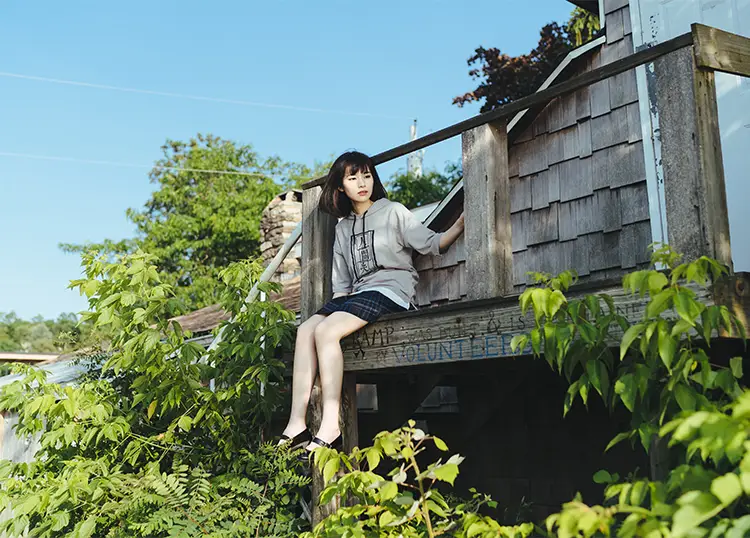
Sketching the Self: From Hangzhou Roots to California Frontiers
Born and raised in the historic city of Hangzhou, Heather Hua—who also publishes under the pen name 花不芄—has journeyed far beyond geographical borders in pursuit of an artistic identity grounded in both cultural specificity and global sensibility. Her path winds through academic rigor and emotional introspection, tracing a line from her early education in China to a BA in Economics at the University of Illinois at Urbana-Champaign, and later to an MFA in Illustration from the Fashion Institute of Technology in New York. Now based in California, Hua works as a freelance illustrator, blending East Asian visual traditions with the psychological depth and stylistic innovations of Western art. Her work speaks to a hybridized visual language shaped by migration, memory, and the search for self-definition in a rapidly globalizing art world.
Hua’s early artistic training in China deeply informs the structure and aesthetics of her work, often surfacing in compositional choices and visual motifs rooted in Chinese culture. However, her inspirations are far from singular. Japanese anime and literature also left a significant imprint, adding a layer of surrealism and emotional nuance. Many of her pieces serve as visual memoirs, transporting viewers into the echo chambers of adolescence. “Agoraphobia,” for instance, evokes the claustrophobic familiarity of a classroom or playground, places tinged with both safety and suppression. Other works—like “A Rainy Day in New York” and “The Brain in the Polar Region”—bridge her life in the United States, reflecting a bi-continental existence filled with contrast and introspection.
What makes Hua’s illustrations particularly distinctive is her ability to blend narrative and abstraction, creating scenes that are at once emotionally charged and compositionally precise. Her style began crystallizing during her MFA studies, where she immersed herself in American visual culture and historical artworks that dissect emotional turmoil. This educational exposure allowed her to incorporate a more personalized storytelling technique, fusing symbolism with contemporary design sensibilities. As a result, Heather Hua’s illustrations embody a profound sense of cultural diversity and inclusivity. Reflecting the globalized nature of contemporary American illustration, her work showcases the influence of artists from diverse cultural backgrounds, a hallmark of the United States as a nation shaped by immigration.
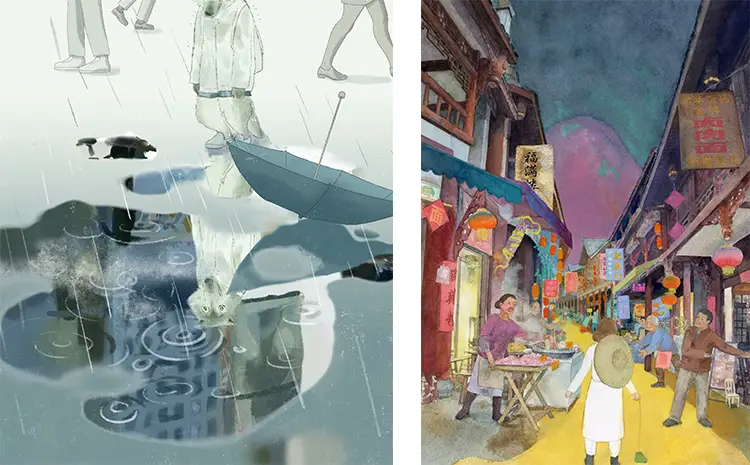
Heather Hua: Finding Her Visual Language
The journey to discovering her current illustration style was neither linear nor easy for Heather Hua. It took nearly three years of rigorous experimentation and internal questioning to arrive at the distinct aesthetic she now employs. During her early MFA period, her portfolio spanned a wide range of visual styles, each reflecting both her versatility and a lingering uncertainty. There were times when she contemplated tailoring her work to meet market trends or infusing more graphic design elements to enhance adaptability. Other moments found her considering whether to lean more into the fine arts tradition or remain committed to illustration. These creative tensions ultimately functioned as a catalyst, pushing her to uncover the nuances of her artistic identity.
Through this process, Hua not only refined her technical capabilities but also confronted critical personal questions. The development of her style ran parallel to a deeper introspective journey—one that forced her to evaluate not just how she wanted to draw, but why. What emerged was a hybrid approach combining hand-drawn textures with digital precision, yielding visuals that feel both tactile and atmospheric. She often employs symbolic imagery and moody color palettes to bridge the gap between the visible world and the inner landscape. This synthesis enables her to articulate complex emotional states in a way that resonates on a psychological level while remaining visually compelling.
Themes of emotional tension, subconscious processes, and societal concerns often anchor her work, guiding viewers through narratives that are as haunting as they are relatable. Her illustrations convert abstract feelings into discernible moments—quiet but heavy with implication. This method enhances audience empathy while cultivating a heightened sensory memory. Hua’s personal growth has been inextricably linked to this evolution; her confidence as an illustrator developed alongside her ability to make deliberate stylistic choices. Ultimately, this blend of introspection and artistic discipline forged the foundation upon which her unique visual language stands.
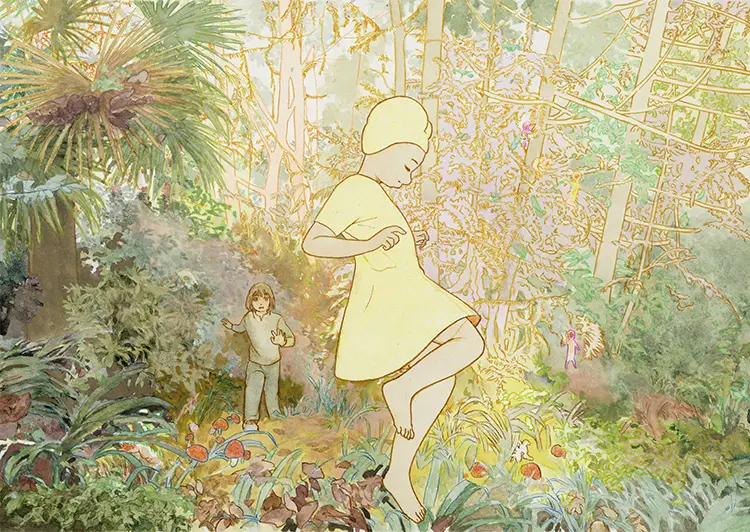
Dream States and Dark Symbols: Exploring the Unconscious
One of the most compelling pieces in Heather Hua’s portfolio is “Dream of Hiding a Corpse,” a chillingly surreal illustration based on a vivid dream. In this imagined scenario, she finds herself in a labyrinthine kitchen, nervously hiding dismembered body parts while authorities carry out a routine investigation in the adjoining living room. Although the tone is dreamlike and absurd, the scene hums with tension—an eerily plausible manifestation of hidden fear and psychological weight. This work represents Hua’s fascination with the subconscious, serving as both an emotional outcry and a visual study in Freudian symbolism. It’s a rare example of a work that manages to be deeply personal while tapping into universal human anxieties.
From a psychoanalytic lens, the illustration reflects an intricate map of psychological repression. The corpse remains can be interpreted as the burdens Hua subconsciously sought to ignore—emotional obligations, internalized conflicts, or societal expectations. The kitchen, often a symbol of domestic routine, becomes a clandestine chamber for suppression. Meanwhile, the police figures serve as metaphors for inner surveillance—moral judgment, societal scrutiny, or perhaps the artist’s own critical self-awareness. Rather than confronting the issues head-on, the dream presents a symbolic attempt to conceal them, revealing a duality between chaos and order, exposure and concealment.
This piece marks a significant turning point in Hua’s creative practice. It demonstrates her growing interest in weaving deeper layers of meaning into her work, using dreams not just as content but as a methodology for visual storytelling. The intuitive birth of the concept, paired with its rich interpretive potential, highlights a new level of artistic maturity. “Dream of Hiding a Corpse” does not merely depict anxiety—it transforms it into a haunting allegory, offering both catharsis and confrontation. By anchoring her illustration in psychoanalytic theory while retaining emotional immediacy, Hua has created a work that is as thought-provoking as it is unsettling, setting the tone for future explorations.
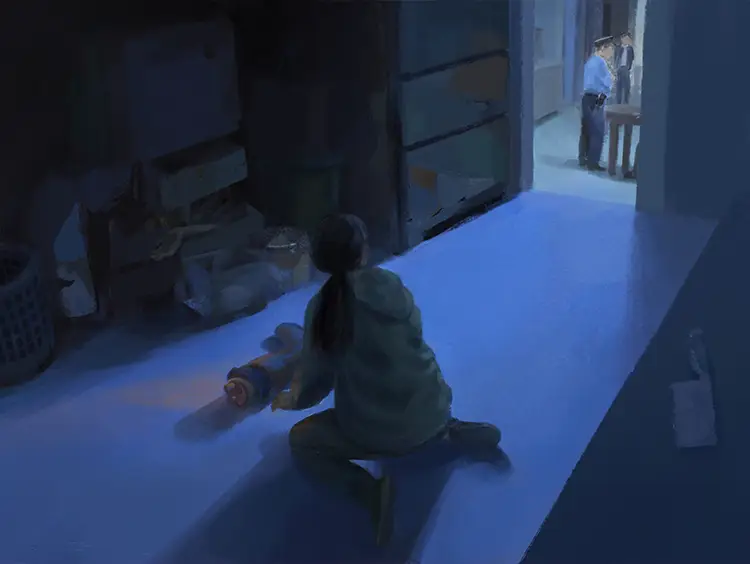
Heather Hua: Creating Space for Thought and Flow
Heather Hua’s creative process is intricately tied to her physical and mental workspace. Her setup includes traditional drawing materials, a scanner, a digital tablet, and a large desk—essentials that bridge analog techniques with digital execution. This hybrid studio environment allows her to maintain the grainy texture of hand-drawn work while leveraging digital tools for precision and impact. Getting started can sometimes be the most difficult part of the process, but once immersed, she often works in long, uninterrupted stretches. Audiobooks serve as her anchor during these sessions, particularly after the brainstorming stage, helping her to stay focused and resist the lure of digital distractions.
Choosing a medium was never a static decision for Hua—it evolved through observation, experimentation, and adaptation. Her early training in academic watercolor laid the groundwork for disciplined technique, which she has since expanded by incorporating Gansai, opaque watercolors, and digital tools. These choices are guided by the specific emotional and narrative demands of each piece. Whether layering soft washes of color or crafting vivid digital compositions, Hua tailors her medium to match the tone of her subject matter. She has also explored other tools like colored pencils and markers for live sketches, and recently began experimenting with oil painting to cultivate depth and intensity.
Looking ahead, Hua has several unrealized projects that she’s eager to bring to life—concepts she continues to develop in parallel with her ongoing work. While she hasn’t publicly disclosed details, this signals a forward-looking creative momentum, underscoring her commitment to evolution rather than repetition. Whether the next phase of her career takes her further into psychological illustration, narrative storytelling, or an entirely new medium, one thing is clear: her practice is driven by the pursuit of meaning. Heather Hua’s art is not just a visual experience; it’s a meditative encounter that invites viewers to pause, reflect, and engage with the emotional undercurrents hidden in plain sight.
